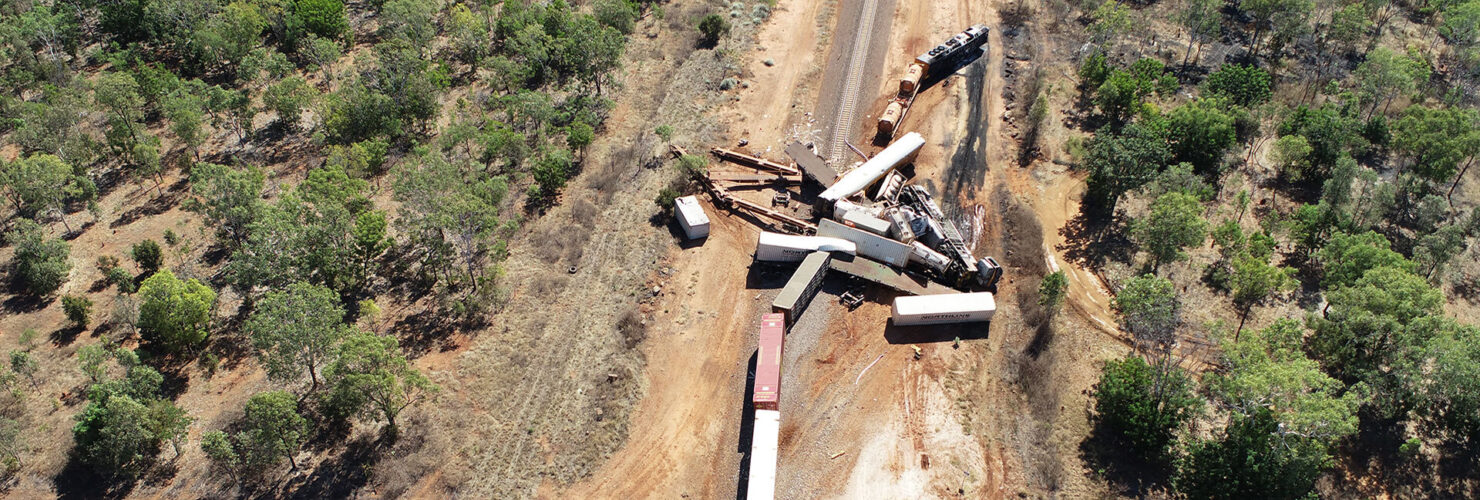Thursday, February 29, 2024
Safety Message: Investigating incidents
During regulatory activities and interactions, ONRSR identifies both good and poor practice from rail operators’ investigations reports.

Rail transport operators’ investigation reports provide an opportunity to better understand how an incident occurred e.g.
- causes can be identified;
- controls can be reviewed;
- lessons can be learned;
- recommendations can be made;
- actions can be taken to prevent recurrence.
In this safety message, ONRSR highlights some poor practices, how to avoid them and what guidance material can help operators to review, update and improve their investigations to ensure they are effective.
For simplicity, these are discussed under four areas:
- Not following the investigation model or template.
- Blaming the person.
- Existing controls not reviewed.
- Corrective actions unrelated or ineffective.
1. Not following the investigation model or template
Many models and methods describe the investigation process. ONRSR accepts that a rail transport operator will adopt terminology and processes that are appropriate to their own railway operations. However, once an investigation model is chosen, operators often do not follow its requirements e.g.
- not collecting all required pieces of evidence;
- not analysing all systemic factors involved;
- not considering all controls available on the hierarchy of controls.
Not adequately following the given investigation model or template can mean that the investigation is not systemic and fails to identify key aspects to fully understand the causal and contributing factors that could prevent recurrence. It is therefore important that whichever investigation model is chosen, all requirements are followed, and the requisite information gathered. Doing this will lead to a better understanding of the event, its causal and contributing factors, effective corrective actions to prevent recurrence.
2. Blaming the person
Many investigations end by ‘blaming the person’ – finding that the occurrence was the result of a mistake or error that was undertaken by the person involved. An example of this would be if a rail safety worker failed to comply with a procedure, the investigation would stop and the recommendation would be to discipline, performance manage or retrain the worker. However, stopping the investigation here limits the potential findings of the causal and contributing factors, lessons learned and ultimately, ability to prevent recurrence.
Instead, the mistake or error should be the starting point of the investigation. If the procedure was not followed, then the investigation should look at why the mistake or error was made e.g.:
- Was the procedure impractical?
- Was the procedure unavailable or out-of-date?
- Was it written in such a way that it could be misinterpreted?
- Did it reflect the reality of the work, and current and accepted work practices?
- Was it consistent with current work practices and culture?
It is also important to look at whether other systems or risk controls contributed to the event. Looking at all risk factors and their controls and going beyond the actions of the person immediately involved, enables the investigation to identify and address the real causes of the incident.
3. Existing controls not reviewed
It is important to review all the risk controls that were in place or should have been in place at the time of the incident. An investigation provides an opportunity to do this. Reviewing controls to check how effective they are in practice is especially important when developing new controls or corrective actions. It also avoids a ‘blame the worker’ focus which can prevent finding systemic causal or contributing factors and therefore hinder organisational learning.
4. Corrective actions unrelated or ineffective
Many investigations identify key systemic factors as a cause of the occurrence e.g. individual, technological, organisational, and environmental factors. However, in the next step of the investigation, making recommendations and identifying corrective actions, the corrective actions proposed are often unrelated or ineffective e.g.:
- corrective actions do not relate to the identified causes;
- corrective actions ignore or do not consider higher-level, more effective engineering, substitution, or elimination controls;
- corrective actions are general statements and not tangible actions to prevent recurrence e.g. ‘undertake a review,’ ‘hold a meeting,’ ‘review controls’.
To improve the effectiveness of corrective actions, use the hierarchy of controls. The hierarchy of controls can be used to identify ways to eliminate or minimise risks to safety so far as is reasonably practicable. For most incidents on the railways, the risks, causes, and controls are well known and understood. Thus, when developing or putting forward recommendations or corrective actions, take into consideration controls and corrective actions used by other operators in Australia and overseas.
Key documents and actions
Operators are encouraged to:
- review their SMS to ensure their investigation reporting process, procedures and templates are consistent and compliant with the above documents;
- review current and previous investigations to ensure compliance with any new or updated investigation reporting processes, procedures, and templates.
Guidance material that can assist:
- Investigation Reports by Rail Transport Operators:
- RISSB Code of Practice on Rail Safety Investigation;
- ONRSR Guideline Meaning of duty to ensure safety so far as is reasonably practicable